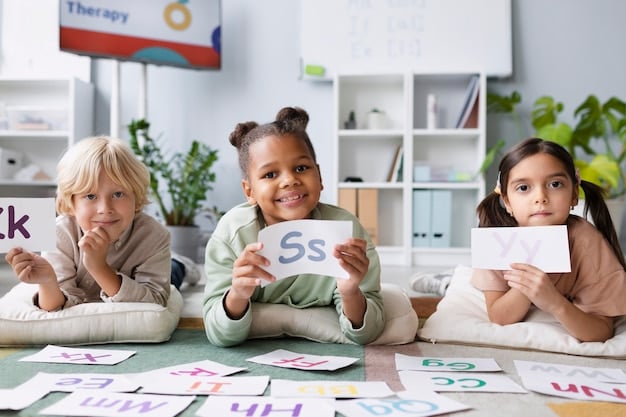🌈Every Child Belongs: Creating Inclusive and Safe Classrooms Where All Learners Thrive
🌈Every Child Belongs: Creating Inclusive and Safe Classrooms Where All Learners Thrive
Child Belongs: Creating Inclusive and Safe Classrooms Where All Learners Thrive
What Does Inclusion Really Mean in Early Childhood?
Inclusion goes far beyond letting every child through the door. True inclusion means creating environments where every child — regardless of ability, #culture, or background — feels seen, supported, and celebrated.
In #early-learning, inclusion is an act of love and justice. It ensures that each child receives the tools, attention, and care they need to reach their potential.
How Can Educators Make Every Child Feel They Belong?
Belonging begins with relationships. When #educators take the time to learn each child’s name, interests, and family background, they communicate, “You matter here.” Simple acts like greeting every child warmly, dis #playing diverse artwork, and encouraging cooperative play help children feel accepted and respected.
Educators can further this effort through the 1,2,3, Eyes on Me: Classroom Safety course, which focuses on building physically and emotionally #safe learning environments — a key part of inclusion.
Why Is Safety the Foundation of Inclusion?
Children can only learn when they feel safe. This means both physical #safety — preventing hazards and maintaining supervision — and emotional safety — creating spaces #free of bullying, fear, or exclusion.
Safe #sleep practices, for example, are critical in infant care settings. Understanding risk prevention through the Prevention of Sudden Infant Death Syndrome and Use of Safe Sleep Practices course helps caregivers protect infants while building trust with families.
In inclusive #classrooms, safety is proactive, not reactive. Teachers anticipate needs, provide comfort, and #adapt the environment to meet diverse #developmental levels.
How Can Educators Support Children With Different Abilities?
Each child learns at their own pace and in their own way. Inclusion isn’t about treating everyone the same — it’s about giving each child what they need to succeed.
This might mean using visual schedules for children who thrive on routine, #sensory tools for those needing calm, or cooperative activities that encourage peer support. When children see differences celebrated, they grow more empathetic and compassionate.
What Role Do Families Play in Inclusion?
Families are a child’s first #teachers. Inviting #parents to share cultural traditions, #home routines, or learning strategies builds continuity and trust. When educators partner with families, inclusion moves beyond the classroom — it becomes a shared commitment to the child’s well-being.
Courses like Curriculum Planning can help educators design learning experiences that reflect family values, interests, and community diversity.
How Can Teachers Handle Challenging Behaviors Inclusively?
Every challenging behavior tells a story. A child who bites, hides, or yells isn’t “bad” — they’re communicating a need. Inclusive educators look beneath the surface to understand triggers and teach coping strategies.
This approach requires patience, #empathy, and strong classroom management. The Classroom Positivity course helps teachers reframe challenges into teachable moments, using positive discipline to guide rather than punish.
How Does Inclusion Benefit All Children?
Inclusion doesn’t just support children with special needs — it strengthens the entire #classroom-community. When children learn alongside peers who think, move, and #express themselves differently, they develop empathy, patience, and adaptability.
Research shows inclusive classrooms improve academic performance and social skills for all #students. Children learn that everyone contributes something valuable — a lesson that lasts a lifetime.
What Steps Can Educators Take to Build Inclusive Practices?
-
Reflect on your own biases. Awareness is the first step toward inclusion.
-
Diversify your materials. Choose #books, toys, and posters that reflect many #cultures, abilities, and families.
-
Collaborate with specialists. Occupational therapists, counselors, and family liaisons can offer insights.
-
Celebrate differences. Mark cultural holidays, share stories, and highlight each child’s strengths.
- Check out this helpful article for promoting diversity: Promoting Diversity, Equity, and Inclusion in Child Care: A Guide to Culturally Responsive Teaching
Why Is Ongoing Learning Essential for Inclusion?
Inclusion isn’t a one-time effort — it’s a journey. Early childhood educators must continually learn, adapt, and advocate. Ongoing professional development through ChildCareEd helps educators stay current on best practices for safety, empathy, and equity.
💛 Final Thought: Every child deserves to feel they belong — in our classrooms, communities, and hearts. Inclusion starts with awareness and grows with compassion.
✨ Learn more through these helpful ChildCareEd courses:
🌟 Join our growing community of educators and caregivers! Follow ChildCareEd on Instagram for classroom ideas, inclusion inspiration, and course updates.
- Inclusive Montessori: Supporting Diverse Learners in the Classroom
- A Better Space for All
- Building Equity: Inclusionary Practices in Preschool
- Bridging Cultures: Family Communication & Collaboration
- Building Bridges for Dual Language Learners
- Strength in Differences: Cultural Diversity
- Creating Environments that Nurture Growth and Community
- FAS in Early Childhood
- Inclusive Lessons for Preschoolers
- Effective and Engaging Classroom and Home Daycare Room Arrangements
- Montessori and Special Education: Tailoring Learning to Individual Needs
- Every Child Matters: Practical Tips for a Safe and Inclusive Classroom
- How to Make Your Circle Time More Inclusive for All Learners
- Creating "A Better Space for All": Enhancing Your Classroom Environment
- Empowering Every Child: Inclusive Education for Success
- Strategies for Differentiating Instruction for Diverse Learners
- Beyond the Basics: Specialized Child Care Training Courses That Elevate Your Expertise
- 🌈Every Child Belongs: Creating Inclusive and Safe Classrooms Where All Learners Thrive
- Planning with Purpose: The Art of Creating Inclusive ECE Classrooms 🎨
- How Do I Create an Inclusive Environment for Children with Diverse Needs?
- 🤝 What Strategies Help Teachers Create Responsive & Respectful Environments for All Children? 🌻
- 🏫 How Can Educators Keep Children Safe and Sound in Every Learning Environment? 🌱
- 🧠 What Shapes a Child’s Strength, Confidence, and Emotional Growth?
- Creating Inclusive Classrooms Where Every Child Belongs
- 🧩 How Can You Make Your Classroom More Inclusive for Children with Autism?
- The “Less is More” Playroom: Simplifying Environments to Reduce Overstimulation